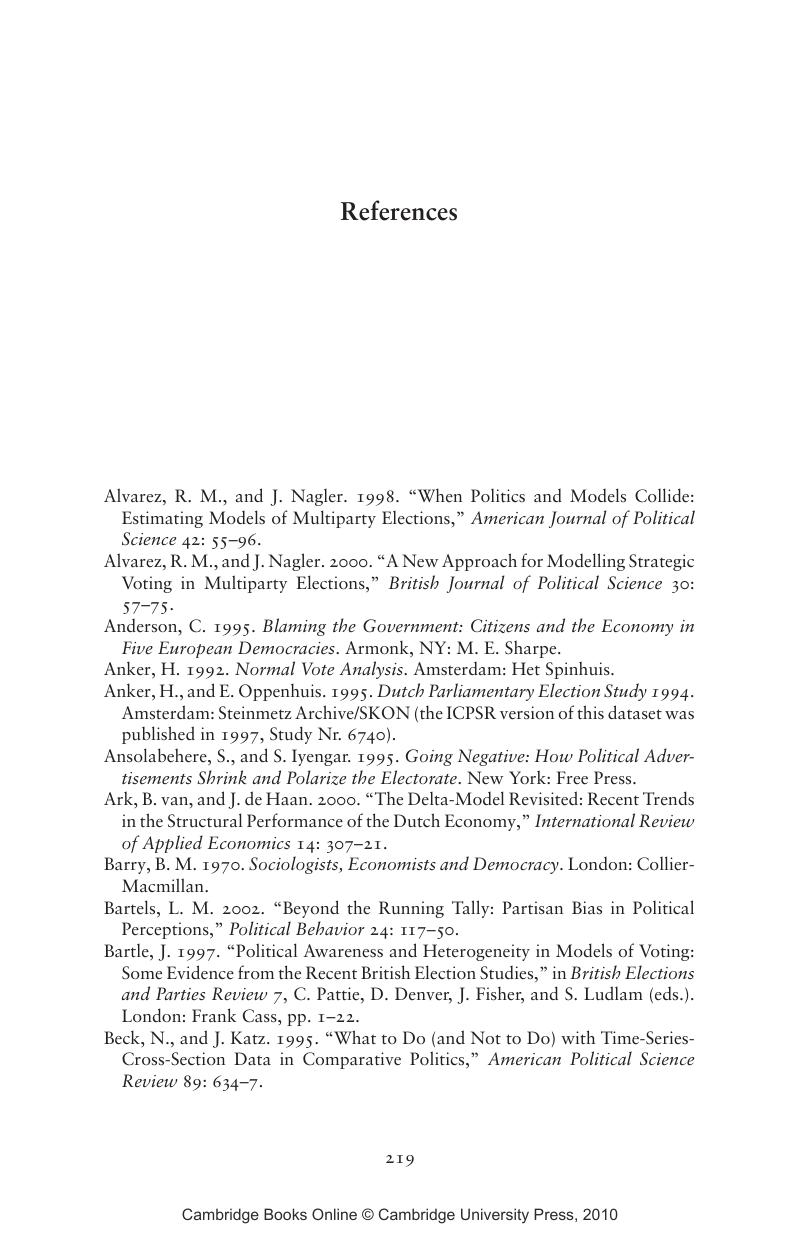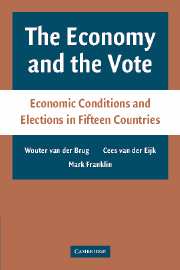Book contents
- Frontmatter
- Contents
- Preface
- Introduction
- 1 Studying Economic Voting
- 2 Party Choice as a Two-Stage Process
- 3 Hypotheses and Data: The Theoretical and Empirical Setting
- 4 Effects of the Economy on Party Support
- 5 The Economic Voter
- 6 From Individual Preferences to Election Outcomes
- 7 The Economy, Party Competition, and the Vote
- Epilogue: Where to Go from Here in the Study of Economic Voting?
- Appendix A The Surveys Employed in This Book
- Appendix B Detailed Results Not Reported in the Main Text
- References
- Index
- References
References
Published online by Cambridge University Press: 18 December 2009
- Frontmatter
- Contents
- Preface
- Introduction
- 1 Studying Economic Voting
- 2 Party Choice as a Two-Stage Process
- 3 Hypotheses and Data: The Theoretical and Empirical Setting
- 4 Effects of the Economy on Party Support
- 5 The Economic Voter
- 6 From Individual Preferences to Election Outcomes
- 7 The Economy, Party Competition, and the Vote
- Epilogue: Where to Go from Here in the Study of Economic Voting?
- Appendix A The Surveys Employed in This Book
- Appendix B Detailed Results Not Reported in the Main Text
- References
- Index
- References
Summary

- Type
- Chapter
- Information
- The Economy and the VoteEconomic Conditions and Elections in Fifteen Countries, pp. 219 - 228Publisher: Cambridge University PressPrint publication year: 2007



